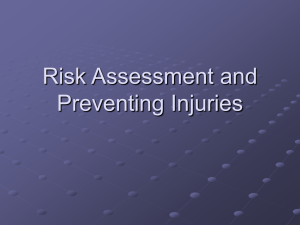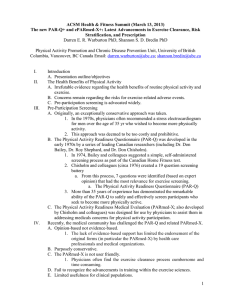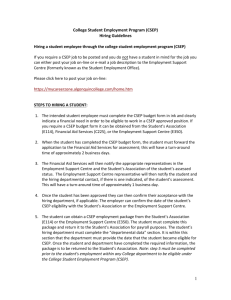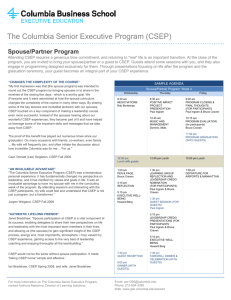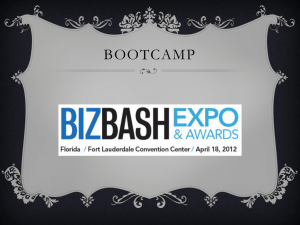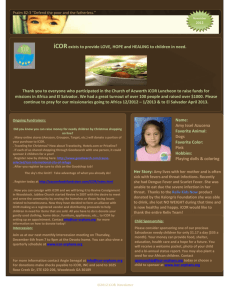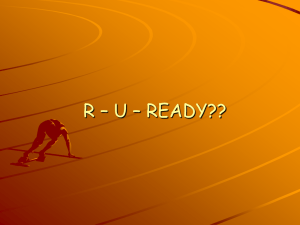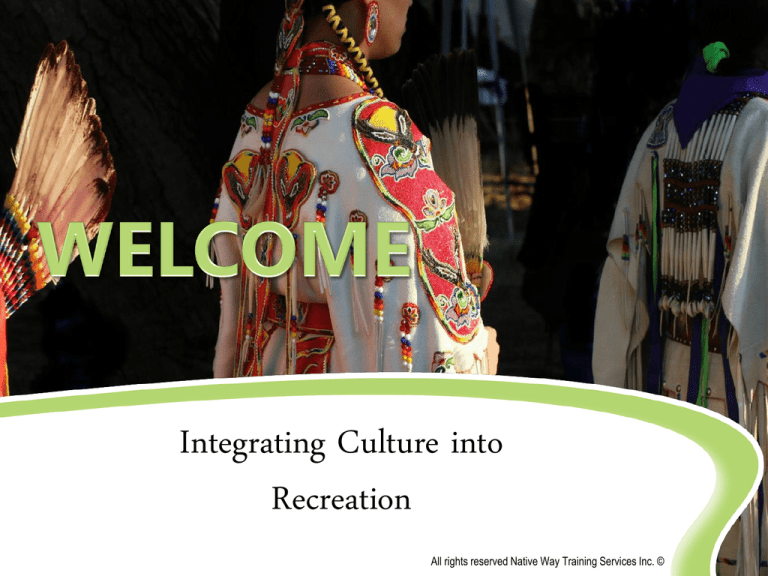
Integrating Culture into
Recreation
All rights reserved Native Way Training Services Inc. ©
Native Way Training Services Inc.
Facebook.com/nativewaytrainingservices
Presented by
Isabelle Aubé
In Partnership with
with Jennifer Pelletier
Webinar Orientation
Delivery of information with
some questions asked
through polls.
Evaluation after the
information session.
Open discussion and sharing
with participants.
Last poll questions evaluating
exchange.
Brief tour of the new Northern
Links Website and all of it’s
valuable resources.
Format of
session
www.csep.ca
Canadian Physical
Activity Guidelines
Screening for Physical Activity
PAR-Q:
Physical Activity
Readiness
Questionnaire
The
Physical
Activity
Readiness
Questionnaire (PAR-Q) is a 1-page form to
see if you should check with your doctor
before becoming much more physically
active.
The PAR-Q & YOU is to be used by
CSEP Certified Personal Trainers®
(CSEP-CPT)
http://www.csep.ca/cmfiles/publications/parq/pa
r-q.pdf
The
Physical
Activity
Readiness
Questionnaire-Plus (PAR-Q+) is a 4-page
form for pre-screening prior to physical
activity
participation
and
includes
additional questions on chronic conditions
for further probing by the CSEP-CEP.
The PAR-Q+ (this version only) may be used
by CSEP Certified Exercise Physiologists®
(CSEP-CEPs)
http://www.csep.ca/CMFiles/publications/parq/P
ARQPlusforCEPs_12Sept2011.pdf
PARmed-X
(Physical Activity Readiness
Medical examination)
PARmed-X is a 4-page physical activityspecific checklist to be used by a physician
with patients who have had positive
responses to the PAR-Q or PAR-Q+.
http://www.csep.ca/cmfiles/publications/parq/pa
rmed-x.pdf
The PARmed-X for Pregnancy is a 4-page
guideline for health screening prior to
participation in a prenatal fitness class or
other exercise. For use by health care
providers and fitness professionals.
http://www.csep.ca/cmfiles/publications/parq/pa
rmed-xpreg.pdf
For millennia, all indigenous Peoples have developed a
relationship with their environment that has sustained and
nourished their bodies, fostered community relations and
strengthened their culture.
Culture and Recreation work in many ways to
help build cohesive, empowered and active
communities.
Combining these
creates a winning
solution to many of the
health and social
challenges our
communities face
today.
Manchester Metropolitan
University’s ‘Arts in Health
Programme’s research
study found that painting,
dance, music and storytelling can measurably
increase our
psychological well-being
and lower levels of anxiety
and depression.
All rights reserved Native Way Training Services Inc. ©
Known as the Earth
Keepers, Indigenous
Peoples play a key role in
conserving flora, fauna
and other
biological resources.
Adding these Teachings
to Sport and Recreation
can only help in restoring
balance in our
communities.
“Inuit love competition
and sport as much as
anyone. Sports around the
world unite people in
friendship and friendly
competition. In the case
of Inuit games, these were
born from two different
needs.”
http://icor.ottawainuitchildrens
.com/node/21
Inuit Culture
“The first being a necessity to be strong, fit
and agile which improved hunting and
survivability in northern regions. The
stronger and more fit you are, the better
you are able to fight illness, traverse
distances, maintain mental clarity etc.”
http://icor.ottawainuitchildrens.com/node/21
All rights reserved Native Way Training Services Inc. ©
“The other need for many of the games
were to keep us entertained during those
long hours out on the land, especially
during the periods prolonged of darkness.”
http://icor.ottawainuitchildrens.com/node/21
“If a family was facing hard times due to
food shortages etc., keeping spirits up
helped to get through difficult times. Some
of these games offered a necessary
distraction.”
http://icor.ottawainuitchildrens.com/node/21
In First Nations communities,
traditional games and physical challenges
were used to resolve conflict whether
it was between two individuals or Nations.
That was then….
We now live
in modern times
with different circumstances.
“Culture is dynamic, so it is no surprise that
Aboriginal culture and practices in North
America have changed over time and will
continue to do so. Sport, along with its
practices and our understandings of its
meaning, offers a contemporary window into
the tensions Aboriginal people negotiate
between their indigenous culture and the
dominant cultural influences of modern North
America.”
Dan Henhawk
So what can we do today
to integrate culture
into recreation?
All rights reserved Native Way Training Services Inc. ©
Talk to your Elders and
get them to tell you
about some of the
games they played.
Invite them to come
teach them to the
youth.
Our Elders are a fading
resource and we need
to get as much from
them now before it is
too late.
Contact your community school and
get their collaboration for the kids to
do a big Traditional Games project
where they need to research their
Nation’s and other Nations Traditional
Games and the meanings behind
them.
Once upon a time when Pow Wows
were also times to trade your goods with
other Nations they also traded games
and songs.
So if your community doesn’t have
many traditional games you can
invite another Nation to come and
share theirs in exchange for teaching
them some of your cultural ways.
All rights reserved Native Way Training Services Inc. ©
There are now companies
who specialize in training
people to give traditional
indigenous games.
Traditional Games “Years of recovering Native
games have resulted in such remarkable
wisdom about Indian cultures and their survival
here in the Americas.
In Montana, the International Traditional
Games Society has quietly worked with
traditionalists to recover Native games.
The recovery has shown preservation of spiritual
ties to community, land and place, that was
reflected through laughter, joy, and play.
The recovery of a game, whether for adults or
children, involved season, nature of place,
values and purposes, and ties to honor and
spirits.”
This will be a great opportunity to gain
understand of the biology and
neuroscience of survival that promotes
community and good relations.
Those are reasons why all of us are the "Last
Hominids Standing"...
cooperation and kinship.
“Lacrosse is a
medicine game
given to the
Ogwe:ho:weh (all
nations) to assist with
healing individuals
and nations.
It was given by Sho:gwi:ya:di;soh for
joy and amusement.
The game is now the fastest growing
team sport in North America and will
continue to grow and expand
beyond
Ho:di:noh:so
(Iroquois)
communities.”
Do a Google search and find a company that is
near you or that interests you and call them up to
see what kind of suggestions they may have.
All rights reserved Native Way Training Services Inc. ©
Medicine Wheel
Integrating culture can be as simple as bringing
the Medicine Wheel into activities to get
participants thinking about the four aspects of
Self: Physical, Emotional, Mental & Spiritual
Regardless of how you choose to do it, getting the
Original People connect back to our roots and
history can only help restore pride and recognition
of who Indigenous People are and our role as
Earth Keepers.
Wishing You much
SUCCESS in your
journey.
THANK YOU !
Join Us on
.com/nativewaytrainingservices
info@nativewaytriningservices.com
Isabelle Aubé 613-818-2196

